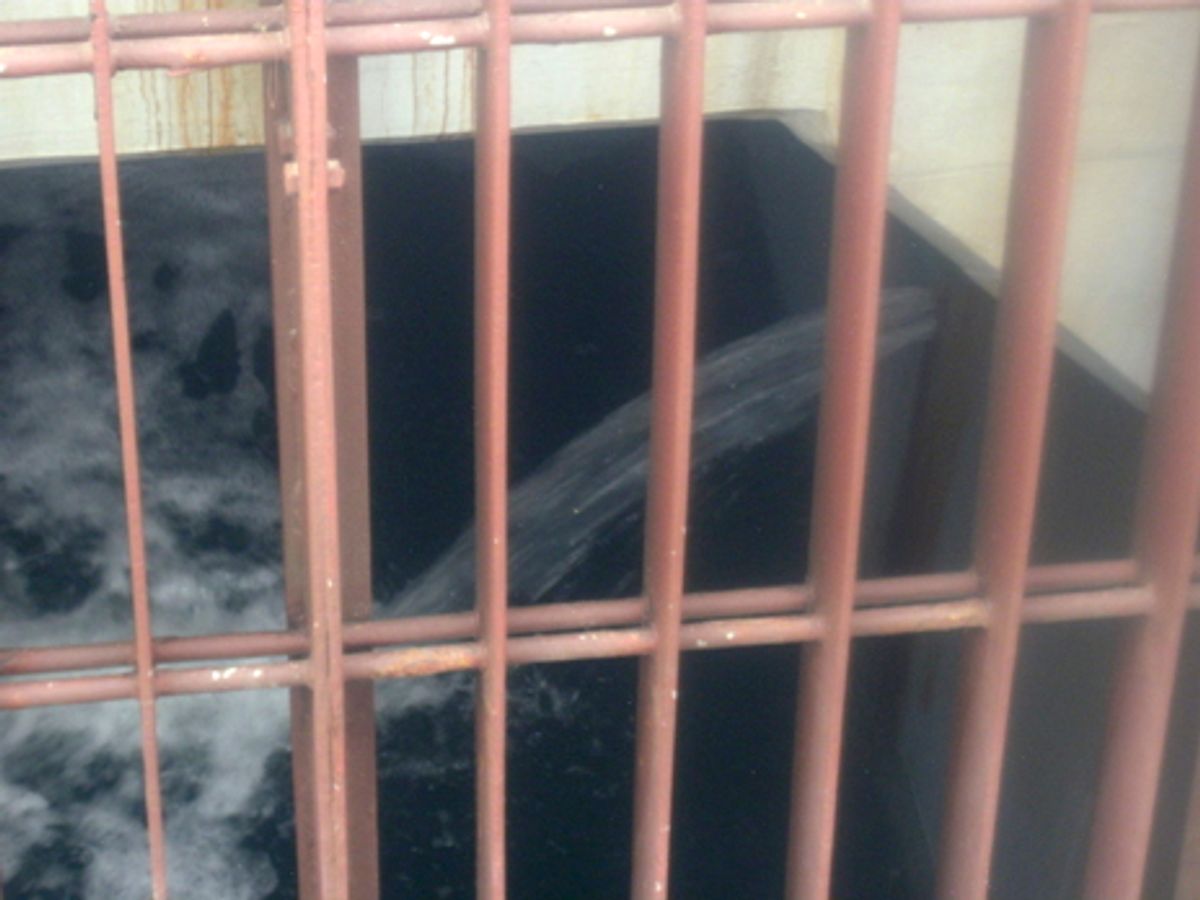Editor's Note: John Boyd is an IEEE Spectrum contributor reporting from Kawasaki, Japan. This is part of IEEE Spectrum's ongoing coverage of Japan's earthquake and nuclear emergency. For more details on how Fukushima Dai-1's nuclear reactors work and what has gone wrong so far, see our explainer and our timeline.
Tokyo Electric Power Co. (TEPCO) continued its battle to stop contaminated water leaking into the sea Tuesday with a new tactic.
Monday it tried several schemes to stem the flow, but all failed. It also tried without success to trace the route of the water—thought to be originating from the contaminated water in the Unit 2 turbine basement—through a series of trenches, tunnels, and pipes leading to the seawater intake area: the source of seawater used to cool the residual heat of the No. 2 reactor. The contaminated water had been discovered on Saturday morning pouring from a concrete pit into the sea through a 20-centimeter crack near the intake area.
Now TEPCO suspects that the water is leaking from a joint in a pipe upstream of the pit and is seeping “through a layer of gravel below the piping.” TEPCO officials said Monday that workers had dug two holes and poured in white tracer powder and then saw white water emerge from the crack. To stop the seepage, TEPCO injected “liquid glass” (sodium silicate) into the bedrock near the pit and said that the water flow has since decreased by half. Where the water still flowing from reactor buildings will go instead is still an open question.
The results of the leaks to the ocean are already evident. NHK, Japan’s national broadcaster, reported TEPCO saying today that it had detected radioactive iodine 131 in seawater samples taken near the plant on Saturday at 7.5 million times the maximum concentration allowed. TEPCO said that samples taken yesterday morning showed the figure had dropped to 5 million times the limit. Koji Okomoto, a professor in environmental studies at the University of Tokyo, told NHK viewers that these figures showed clearly that highly radioactive substances from the reactor are flowing into the sea.
As if to underline Okomoto’s remarks, small fish caught near Ibaraki Prefecture, which borders Fukushima to the south, have been found to contain over 526 becquerels of radioactive cesium per kilogram, topping the 500-becquerel legal limit. NHK reported that all local fishery cooperatives in the prefecture have agreed to suspend catching the fish, which are known as sand lances.
With no other option available, TEPCO is purposefully adding to the radioactive material entering the sea. The company began its planned dumping of 10 000 metric tons of accumulated low-level radioactive water into the ocean from its central radioactive waste disposal facility at 7 p.m. Monday night. The dire measure was taken with government agencies’ approval in order to make room to receive the highly radioactive water pooled in the reactor turbine basement and in an outside cable and pipe trench near the No. 2 reactor.
TEPCO followed this at 9 p.m. by releasing into the ocean another 1500 metric tons of low-level radioactive subsurface water that had been stored in the “sub-drain” pits of Units 5 and 6. This additional release of dirty water was done to prevent radioactive subsurface water flowing into the No. 5 and 6 reactor buildings. TEPCO believes the No. 2 trench is likely the source of the contaminated water that was flowing through the 20-cm crack discovered earlier.
Hidehiko Nishiyama, deputy director-general of the Nuclear and Industrial Safety Agency (NISA), explained in a Monday night press briefing that preparations were under way to bring in storage containers, such as barges and a floating platform, to receive contaminated water. But he said that such arrangements took time, and TEPCO was faced with an emergency situation it had to deal with immediately.
Yukiya Amano, director general of the International Atomic Energy Agency, said yesterday that the situation at the Fukushima plant remained serious and that agency experts would “visit the on-site emergency control room of the Fukushima Dai-1 plant to get firsthand information.” Amano was speaking to delegates of member countries gathered in Vienna for the Fifth Review Meeting on Nuclear Safety. Amano added that the agency wanted to send an international expert group to conduct an assessment of the accident. “I believe this should include an element of peer review,” he said.




